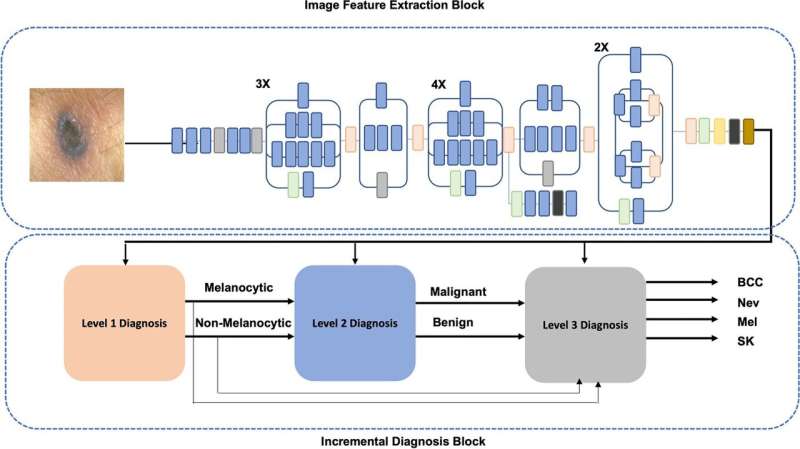This article has been reviewed according to Science X's editorial process and policies. Editors have highlighted the following attributes while ensuring the content's credibility:
fact-checked
trusted source
proofread
Researchers teach AI skin-cancer diagnosis tool to see color

McMaster oncology researchers are harnessing the power of artificial intelligence to improve health outcomes for people of color.
AI has been shown to accurately diagnose skin conditions like cancer, but has limitations.
"This lack of diversity is a real problem when it comes to diagnosing certain skin lesions which present differently in people of color," explains Eman Rezk, a Ph.D. candidate in the School of Computational Science and Engineering.
"We have a lot of accurate skin cancer diagnosis models, but they are all trained on the available images, which we know aren't as diverse as they should be. As a result, AI models will never be able to correctly diagnose the non-white population as accurately," she says.
Rezk is part of a team that developed a deep learning tool to analyze skin image repositories to determine the distribution of skin tone across those images. The tool revealed that less than 20% of existing images represented non-white skin.
"As engineers, we wanted to think outside the box and deal with a practical, possibly life-threatening issue. This presented an opportunity for us to make a significant impact and confront an issue relating to equity, diversity, and inclusion," explained Wael El-Dakhakhni, a professor in the School of Computational Science and Engineering, who oversaw the project.
They developed a deep learning algorithm that generated realistic images of darker skin colors and incorporated different skin tones and characteristics for malignant and benign lesions. The computer models that were trained on the created databank outperformed the models trained on the existing images, which predominantly feature white skin.
"We harnessed generative AI techniques in a unique way to generate new data and create a new and diverse databank, which was validated by medical specialists and proven to be accurate in its diagnoses. Further, we showed how the algorithm came to its conclusions. Physicians will see the process used to get the diagnosis making it easier for them to trust the results. That's how they become believers, by ensuring transparency," said El-Dakhakhni.
In a study published in the Journal of Healthcare Informatics Research, Rezk and El-Dakhakhni tackled the trust issues in AI models. They designed interpretable and human-centered skin cancer diagnosis models that mimic dermatologist reasoning to assist in making early diagnoses.
More regulations are needed before these models are integrated into the workflow, the researchers say.
"A human touch is necessary. A model left entirely to operate without human intervention does not perform at the same level as one that benefits from human input. We get more accurate and interpretable results that ensure more inclusive and comprehensive care," Rezk explained.
The team's next steps involve incorporating more features into the image generation engine to better represent different lesion characteristics and their presentation on different skin tones.
"Tackling EDI through research like this is kind of like a no-brainer. This is what I would like my research to tackle going forward. Not only this but in other areas, like affordable housing and climate equity," said El-Dakhakhni.
More information: Eman Rezk et al, Interpretable Skin Cancer Classification based on Incremental Domain Knowledge Learning, Journal of Healthcare Informatics Research (2023). DOI: 10.1007/s41666-023-00127-4





















